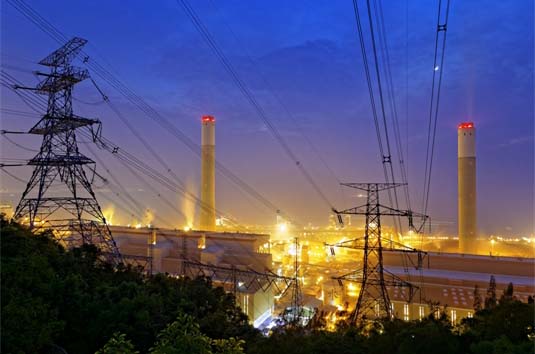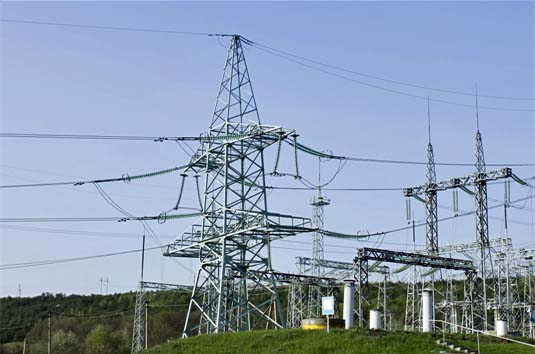|

Have you ever wondered how Power Companies function? How does the electricity get from a power plant to your home or business? Well, there are hundreds of power companies and thousands of power plants in the United States. Usually, these are either connected to the main electrical power grid or in rare instances, isolated systems providing electricity to remote areas.
A Typical Power Company
Electric Utility Companies are divided into three distinct subgroups. These groups are Generation, Transmission and Distribution. There is also another group that power companies utilize that monitor and control all of these subgroups. This group is usually called the System Operations group or something similar.
Generation
This group consists of the power companies’ power generating resources. These can include coal, gas, oil, nuclear, hydro, diesel, wind, solar power plants and more. Each of these facilities relies on diesel backup power for transient periods and outages.
The electricity that these Power Plants produce is automatically controlled under instructions from the System Operations Group. This automatic control is usually accomplished using something called Automatic Generation Control or AGC for short. AGC controls the megawatt output, frequency, and regulates the voltage and VAR (volt amp reactance) output of the generating units.
The Generation group also contains sub-groups which are the support that go along with these Power Plants and these include Operations, Maintenance and Engineering and there are many departments to these three entities (Warehousing, Safety, Environmental, Fuels, Training, Human Resources and Labor Relations to mention a few).
Transmission
The Transmission group usually takes over after the electricity leaves the main step up transformers of a power plant which increase the voltage considerably and is measured in KV (kilovolts). Voltages of 500KV, 345KV, 230KV, 115KV are common for the Transmission system. There are other cases where high voltage DC lines are used up to 800KV.The electricity then goes to high voltage substations, sometimes over long distances. These sub-stations can be owned by other power companies which are also connected to the Grid. Transmission sub-stations use backup diesel generators to supply power to the relaying equipment in the event of a power outage. When the electricity reaches an area where it can be utilized by the Power Companies customers, it is stepped down to a lower voltage, where the Distribution group takes over. The Transmission group designs, maintains, builds and inspects these systems. Maintenance and outages are coordinated according to instructions from the separate System Operations Group. These instructions are given to Transmission system linemen.
Distribution
 As mentioned above, the Distribution group takes over delivery of the power to the customer after the voltage has been lowered and delivered to Distribution Substations. These substations lower the voltage even further to, say 69KV or 22KV depending on the distance and load demands of the customer service area involved.
Like the Transmission switchyards and substations, Distribution substations depend on backup diesel generators to supply power to the relaying equipment in the event of a power outage. Large businesses and factories require higher voltages for powering production equipment.
From the distribution substations, power is sent along power poles or underground to residences and businesses alike. Transformers are utilized to lower the voltage to 220V or 110V for individual residential customers. Like the Transmission system, maintenance and restoration of the Distribution system are coordinated through the System Operations Group. The Distribution system includes meter reading, billing, blue stake, customer service departments and more.
System Operations
The System Operations group is the nerve center of a power companies’ business. Here power is bought, sold and scheduled for delivery. The System Operations Control facilities have multiple backup power sources, primarily diesel generator sets. Outages on transmission and distribution lines are scheduled and strict communications and safety procedures are followed. The people who work in these Power Dispatching Centers are called Dispatchers or System Operators and must be licensed with the Federal Government.
Power Plants are classified as either base load, peaking or renewable resource units. Base load units run mostly 24 hours a day all year, unless they are on an outage or overhaul. These include nuclear, coal and run of the river hydro plants. Peaking units, like natural gas, fuel oil (diesel) and hydro pump storage units are run when the system load demand is greater than what the base load units can generate.
However, fuel prices more accurately determine a peaking units operation. Solar, wind and other types of renewable resource generation can only be used at certain times of the day and sometimes are not available (no wind).
Electricity is a commodity like pork bellies, silver or corn, and it is traded as such. Sometimes it is profitable to buy and sell power even if you don’t own any generating assets. Power companies buy and schedule power deliveries as far in advance as possible and as cheaply as they can. This way they can put off rate increases to their customers (you) for as long as possible.
|